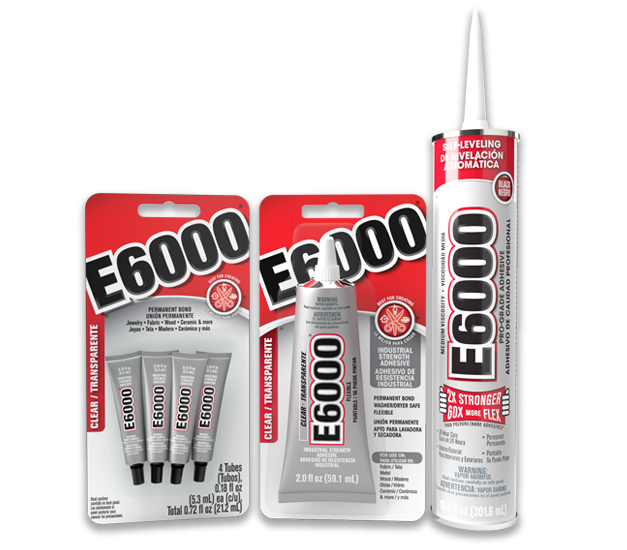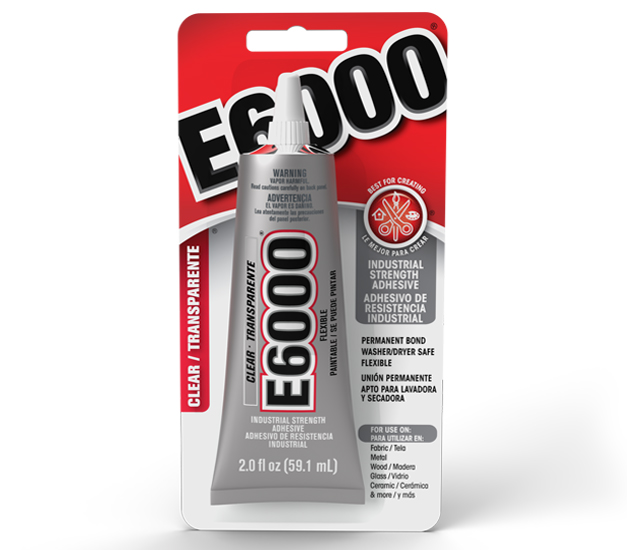E6000 glue typically takes around 24 to 72 hours to dry completely. The drying time can vary based on factors like temperature and humidity.
E6000 glue is a versatile adhesive used for various crafting and DIY projects. It’s known for its strong bond, flexibility, and waterproof properties. However, knowing how long E6000 glue takes to dry is crucial for the success of your project.
Factors such as the thickness of the glue application, temperature, and humidity levels can affect the drying time. Understanding these factors can help you plan your project timeline effectively. We’ll explore the drying process of E6000 glue, factors that influence its drying time, and essential tips for achieving the best results. Let’s dive in and get a deeper understanding of how long E6000 glue takes to dry and how you can optimize the drying process for your projects.

Credit: eclecticproducts.com
Table of Contents
Factors Affecting Drying Time
Factors affecting drying time can vary depending on the type of glue used, including E6000. Variables such as humidity, temperature, and thickness of the glue layer can affect the time it takes for the glue to completely dry.
Environmental Conditions
Temperature and humidity levels impact E6000 glue drying time.
Amount Of Glue Applied
Applying a thick layer of glue will increase the drying time.

Credit: www.reddit.com
Recommended Application Techniques
When it comes to using E6000 glue, mastering the recommended application techniques is crucial for success. Proper application ensures a strong bond and efficient drying time.
Thin Layers
- Apply E6000 glue in thin layers.
- Layering the adhesive ensures proper bonding and quicker drying.
- Avoid using excessive amounts of glue to prevent prolonged drying times.
Proper Ventilation
- Always work in an area with adequate ventilation.
- Good ventilation speeds up the drying process of the glue.
- Avoid inhaling fumes by working in a well-ventilated space.
Comparison With Other Adhesives
E6000 glue typically dries within 24 hours depending on the thickness of the application. Compared to other adhesives, it offers a longer drying time but ensures a strong and durable bond once fully cured. Applying light pressure during the drying process can expedite the setting time.
E6000 Vs. Super Glue
When it comes to comparing E6000 glue with super glue, there are a few key differences to consider.
E6000 glue is known for its exceptional strength and flexibility, making it a popular choice for a wide range of applications. Super glue, on the other hand, is admired for its quick-drying properties and ability to bond almost instantly.
While E6000 glue takes a longer time to dry compared to super glue, the wait is well worth it. The extended drying time allows for proper positioning and adjustment of the bonded materials, ensuring a secure and long-lasting bond.
Moreover, unlike super glue, E6000 glue is resistant to temperature changes, water, and chemical exposure. This means it can be used on both indoor and outdoor projects with confidence.
E6000 Vs. Epoxy Resin
Another popular adhesive that often gets compared to E6000 glue is epoxy resin.
E6000 glue and epoxy resin both offer strong bonds, but there are some noteworthy differences between the two. Epoxy resin typically requires mixing two separate components, a resin and a hardener, to activate its adhesive properties. This process can be time-consuming and requires precise measurements.
In contrast, E6000 glue comes ready to use straight out of the tube, eliminating the need for any mixing or additional tools. This makes it more convenient and beginner-friendly.
Moreover, E6000 glue is known for its flexibility and versatility. It adheres well to a wide variety of materials, including wood, metal, plastic, fabric, and glass. Epoxy resin, while also versatile, may not adhere as well to certain materials, making E6000 glue the preferred option for many crafters and DIY enthusiasts.
In addition, E6000 glue dries clear and remains flexible, allowing for movement and expansion of the bonded materials. On the other hand, epoxy resin tends to dry rigid and can become brittle over time.
Whether you’re comparing E6000 glue with super glue or epoxy resin, it’s important to consider your specific project requirements. E6000 glue’s strength, flexibility, and wide range of applications make it a reliable choice for many crafting and repair needs.

Credit: eclecticproducts.com
Accelerating Drying Time
E6000 glue is a popular adhesive known for its strength and versatility. One common concern when using this glue is the drying time. Fortunately, there are a few methods you can use to accelerate the drying process and reduce waiting time for your project’s completion.
Heat Application
Applying heat can significantly speed up the drying time of E6000 glue. The warmth helps to activate the glue’s curing process, allowing it to dry quicker. However, it is important to note that excessive heat can lead to the glue losing its effectiveness. Therefore, it is crucial to follow the manufacturer’s recommendations for safe heat application.
Using Accelerator Products
Accelerator products are specifically designed to reduce the drying time of various adhesives, including E6000 glue. These products work by promoting faster chemical reactions within the glue, helping it to dry more rapidly. To use an accelerator, simply apply a small amount to the glued surfaces before joining them together. Be sure to read and follow the instructions provided by the accelerator product manufacturer for optimal results.
Accelerator products can be especially helpful when working on time-sensitive projects or when you need to adhere materials that may take longer to bond with E6000 glue alone.
By experimenting with these methods, you can save valuable time and complete your projects sooner. Remember to always use caution and follow the proper guidelines provided by the manufacturer for satisfactory results when accelerating the drying time of E6000 glue.
Testing Dryness
E6000 glue typically takes 24 to 72 hours to fully cure and reach its maximum bond strength. However, it may feel dry to the touch after around 30 minutes. To ensure the best results, allow the glue to dry undisturbed for at least 24 hours before handling the bonded items.
Tactile Test
One way to determine if E6000 glue is completely dry is through a tactile test. Simply touch the glued surface lightly with your fingertip and see if it feels sticky or tacky. If the glue still feels wet or adhesive, it means it has not fully dried. On the other hand, if the surface feels dry and smooth to the touch, you can confidently say that the glue has dried.
Visual Clues
Examining the visual appearance of the E6000 glue is another effective method to assess its dryness. When the glue is wet, it typically has a cloudy or opaque appearance. As it dries, it gradually becomes clearer and transparent. Keep in mind that some colored versions of the glue may retain their tint even when dry. So in such cases, focus on the overall clarity of the adhesive and not its color.
You can also look for any visible signs of evaporation, such as the absence of shiny or glossy spots on the glued surface. If the glue has completely dried, these shiny areas should no longer be present, indicating that the moisture has evaporated. Additionally, cracks or wrinkles in the adhesive may appear as it dries, providing further evidence of its dryness.
Remember that the drying time of E6000 glue may vary based on factors like temperature, humidity, and the materials being bonded. It’s vital to consider these variables to understand the accurate dry time for your specific application.
By conducting a tactile test and observing the visual clues, you can effectively determine if the E6000 glue has fully dried and is ready for use. Make sure to be patient and allow sufficient time for the glue to dry completely for optimal results in your projects.
Importance Of Proper Drying
Properly drying E6000 glue is crucial to achieve the best results and ensure a strong and durable bond. Understanding the importance of allowing the glue to dry fully is essential to prevent any issues that may arise due to premature handling or use. In this section, we will explore the significance of proper drying and address specific factors that can affect the drying process.
Strength Of Bond
Allowing E6000 glue to dry thoroughly is vital for maximizing its bonding strength. Premature handling or putting stress on the bond before the adhesive is completely dry can compromise the integrity of the bond. By giving the glue sufficient time to dry, you can ensure a strong and durable bond that lasts over time.
Preventing Smudges Or Smears
Proper drying is also essential to prevent smudges or smears that can occur if the adhesive is not completely set. Handling the bonded items before the glue is fully dried may result in unsightly blemishes or inconsistencies in the adhesive surface. Allowing the E6000 glue to dry thoroughly minimizes the risk of smudges and ensures a neat and professional finish.
Frequently Asked Questions
How Strong Is E6000 Glue?
E6000 glue is very strong, with a tensile strength of 23. 7 MPa. It forms a permanent bond for a variety of materials, including wood, metal, glass, and plastic. It offers a durable and long-lasting adhesion, making it ideal for both indoor and outdoor applications.
How To Make E6000 Glue Dry Faster?
To make E6000 glue dry faster, use a small fan to circulate air, apply heat using a hairdryer on low setting, or place the glued object in a warm room.
Which Glue Is Stronger E6000 Or Hot Glue?
E6000 glue is stronger than hot glue when it comes to bonding strength. E6000 glue provides a more durable and long-lasting hold for different materials. With its strong adhesive properties, E6000 glue is a popular choice for various craft and DIY projects.
How Long Does It Take For An E6000 To Harden?
E6000 adhesive typically takes around 24 to 72 hours to fully harden.
Read Next:
Conclusion
After learning about E6000 glue’s drying time, you can now apply this knowledge in your crafting projects. Remember to follow the recommended curing time for best results. Understanding the drying process will help you achieve strong and long-lasting bonds with your projects.
Happy crafting!
